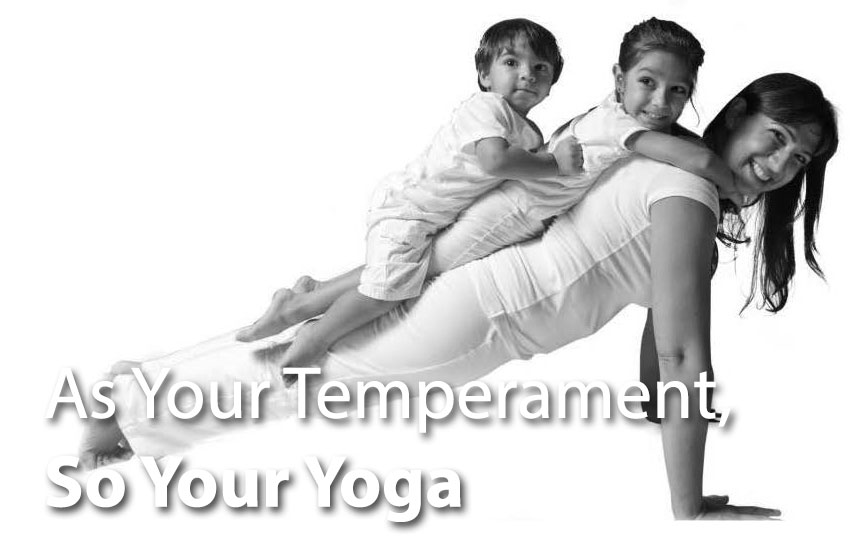Integral Yoga is a slow, organic style of Yoga that seeps into every part of your life; on and off the mat. I was born into a family of Integral Yogis, where my father was a devoted disciple of Swami Satchidananda. We spent many of our summer holidays at Gurudev’s ashram, Yogaville, where my sisters and I would be a part of the summer Yoga programs for kids.
As a child, I saw so many personalities come to Integral Yoga and find everything they were looking for. There were doctors and scientists, singers and dancers, atheists and religious leaders, businessmen and hippies, and many more. Integral Yoga has something for everyone.
Integral Yoga is made up of six branches of Yoga. Within these branches are practical tools for realising our true natures,which is the goal of Integral Yoga:
1) Hatha Yoga
Known as the physical practice ofYoga, Hatha encompasses a person’slifestyle, which includes how theytreat the body on a daily basis. Thepractice is body-based and includesthe asanas (postures), pranayama(breath control), mudras, (energyseals), kriyas (detoxification), yoganidra (deep relaxation), and the yogicdiet. In today’s society, this is themost recognised and practised formof Yoga.
2) Raja Yoga
This is a very deep psychologicalpractice of Yoga that focuses ontaming the thoughts in the mind. Itsfoundation begins with ethicalpractices, which influence how weregard our family, friends andcommunities, and ultimately our self.The practice evolves intoconcentrating the mind, enabling usto sit in meditation. This is one of themost challenging and misunderstoodpractices. Many people regardmeditation as something that theyshould be able to do the first timethey try. What many people don’trealise is that meditation has to bedeveloped, with an entiremethodology behind it. People whohave patience and are up for thechallenge are completely taken bythis practice. They can thustranscend the mind to realise theirtrue nature.
3) Karma Yoga
For the movers and shakers that can’tsit still, Karma Yoga – known as thePath of Action – is perfect for thispersonality type. Action becomesYoga when the Karma Yogi learns toperform tasks with pure intentions,the right attitude, perfect quality, andno expectation of compensation orpraise. First time Karma Yogis areusually asked to clean toilets, washdishes or do other mundane tasks,bringing them face to face with theirunderlying intentions and attitudes.Humbled by this experience, theyevolve to perfect every action. Manyof them become the silent saints ofthe earth – doing amazing work thatno one knows about; looking afterhumanity as one brotherhood.
4) Jnana Yoga
This is a branch of Yoga for intellectualbeings that like to analyse. Thepractice of Jnana Yoga, requires one touse logical reasoning to understand thetrue difference between what is real andwhat is illusion; what is permanent andwhat is impermanent. Observingsilence is a profound tool for JnanaYogis, for they can see the countlessthoughts that are in the mind, andslowly can disregard each one. Withsubjects such as “the nature of change”and “the inevitability of death”, JnanaYoga challenges its followers to realisethat they are beyond the body and themind, and thus a part of a universalconsciousness and omnipresence.
5) Bhakti Yoga
Bhakti Yogis are known as moreemotional characters, however it’s onlybecause they make decisions with theirhearts rather than their heads. It isknown as the Yoga of Devotion. BhaktiYogis are often stereotyped asreligious, because singing andchanting devotional songs arecommon, but the practice goes beyondthis. Bhakti Yogis are steadfast in theirfaith; be it to a Guru, a God or Saint, oreven a non-religious entity like MotherNature, brotherhood of mankind, orworld peace. Bhakti Yogis are the mosttrusting devotees, and through theirfaith, they can transcend all aspects oftheir lower natures to experiencedivinity in their lives. They are knownas the peaceful warriors, spreading joyand love everywhere.
6) Japa Yoga
The last branch is the Yoga of Sound– a scientific and disciplined methodthat is only recently being exploredthrough modern medical research.Mantras are sound structures, whichcarry vibrations that can tune aperson into a particular aspect of theuniversal consciousness. Mantraswere revealed to Sages in deepmeditation, and have been passed onto generations of students. Constantrepetition of these mantras, have aprofound influence on an individual,calming the mind, healing the body,and ultimately awakening spiritualawareness. All you have to do isrepeat it diligently and faithfully.When I fully understood all thedifferent paths, I realised that mydaily Hatha practice was only the tipof the iceberg. I entered into apractice that opened me upphysically, emotionally, intellectuallyand spiritually. The added element ofSri Swami Satchidananda’s systemwas his advocacy of universalacceptance and tolerance of all beliefs– religious and non-religious. Hismotto, “Truth is One, Paths areMany”, is a teaching in itself, helpingus to realise the goal of Integral Yoga.Many of the branches appeal to me,and the beauty of Integral Yoga, isthat I don’t have to choose. IntegralYoga embodies the unity of the entirecreation represented by the Light ofTruth. All journeys toward the Lightof Truth are legitimate, and practicesshould be adapted to suit everypersonality type. SwamiSatchidananda explains that “bymaintaining our natural condition ofa body of optimum health andstrength; senses under total control; amind well-disciplined, clear and calm;an intellect as sharp as a razor; a willas strong and pliable as steel; a heartfull of unconditional love andcompassion; and an ego as pure as acrystal, we can all lead a life filledwith Supreme Peace and Joy.”Whatever your path, may it be fullysuited to your personality, and may itbe a beautiful one.


















 Other
Other